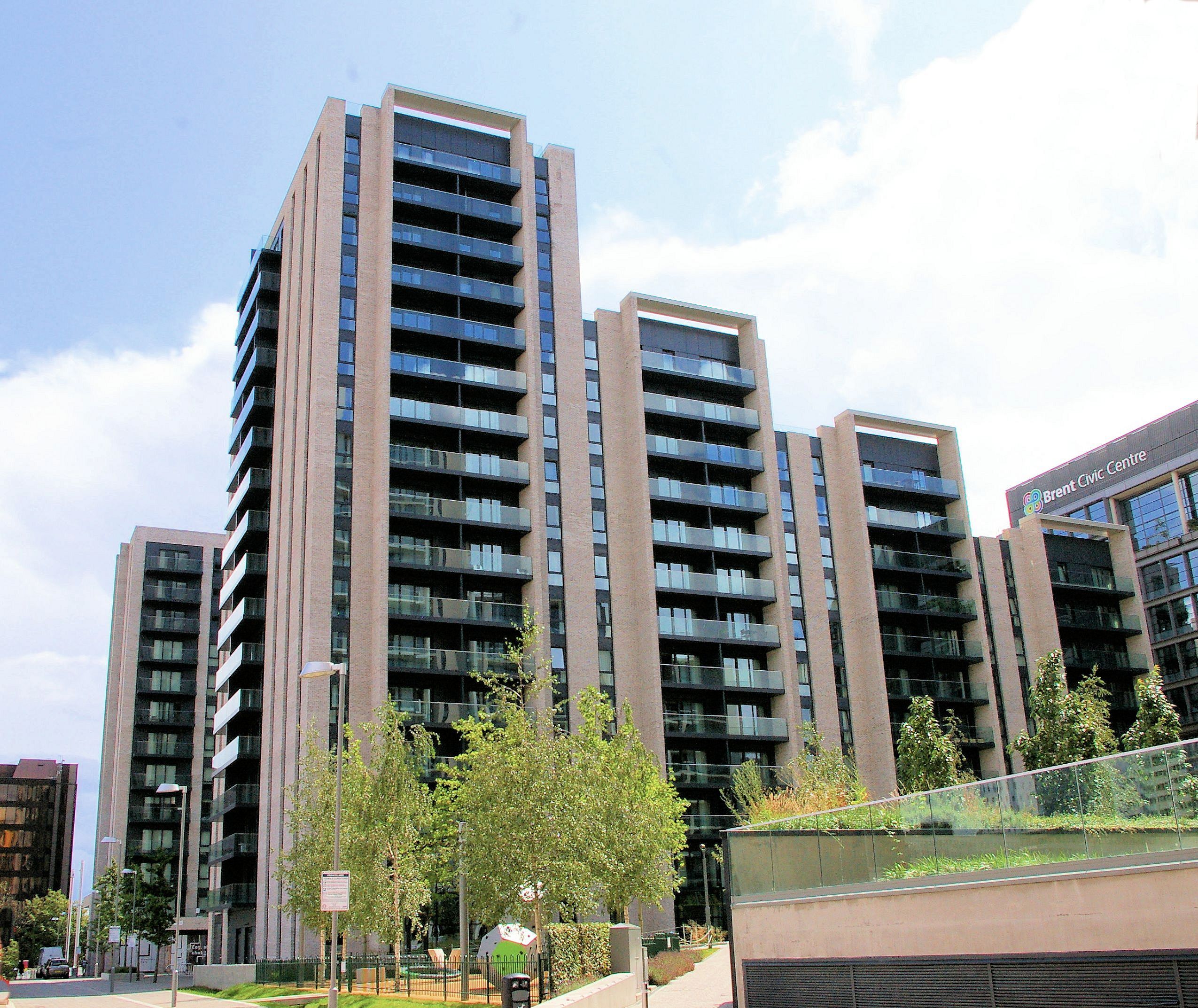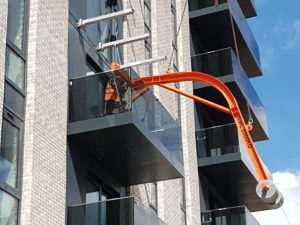
Located in the heart of the vast new Wembley Park regeneration project, the two residential buildings that make up the Landsby East and Landsby West development (Danish for village) are contemporary in design, with apartment interiors that continue the Scandinavian theme. Externally there are roof terraces and first floor level podium gardens, along with 280 generous balconies that add a stylish and aesthetic feel to the exterior finish of the building. Their appearance is undoubtedly pleasing, but inevitably there were technical challenges involved in both initial installation and long term performance of the balconies that had to be addressed – among them safety, precision, reliability and thermal efficiency. It needed a collaborative approach from two of the leading companies in the business, Brooksby Projects Ltd for its balcony technology and Schöck for its load-bearing thermal insulation solutions.
Slide-on balconies were a must
Wates, the main contractor on the project, were very specific in requesting cantilevered, slide-on balconies and FlightDeck® balconies from Brooksby Projects Ltd offered the ideal solution. FlightDeck® balconies do not need to be fixed from a balcony below, which reduces the on-site health and safety risks. In addition, this ability to install from the top down, means that the balcony system saves crane time and requires no scaffolding or other external access. On a large high-rise project with multiple elevations, the installation time saved is considerable when compared with traditional bolt-on balconies,. An additional challenge was that the building’s design demands required that many of the 280 balconies installed involved subtle design adaptations and in total thirteen different variations were supplied to meet the Landsby project requirements.

Thermal break elements are key
A key element in the structural and long–term insulation performance of the balconies was the installation of Isokorb structural break units from Schöck. Early involvement was necessary to ensure that the connectors were accurately cast into the building during the mainframe construction phase and Brooksby provided installation templates to ensure the line and level of all balcony connections were precise. A Brooksby stub bracket was attached to the Isokorb units prior to the concrete being poured. The balcony cantilever support arm was then attached (same depth as the balcony) to the stub and the fully pre-assembled panel glass balcony chassis slid on to the cantilever arm and locked into position.
The Schöck Isokorb units are structural, but their other long-term purpose is to minimise the risk of thermal bridging. Ineffective insulation at the connection points, especially with 280 balconies involved, means local heat loss, resulting in more energy being required to maintain the internal temperature of the building. This is a major consequence of thermal bridging, but there are other issues too. Low internal surface temperatures in the area of the thermal bridge can cause condensation, which leads not only to structural integrity problems with absorbent materials such as insulation products or plasterboard, but the potentially serious occurrence of mould growth. So for any project involving balcony connectivity the prevention of thermal bridging is a critical issue.

Success is about teamwork
The success of this project has been very much about teamwork and this was recognised at the London Construction Supply Chain Awards in late 2018. Hosted by Wates, to acknowledge sub-contractors with whom they have worked throughout the year, Brooksby were awarded ‘Best New Supply Chain Partner’ for the Landsby project. Brooksby Managing Director, Simon Goodenough commented: “It was great to have won this award which reflects how hard the whole team worked on the project to ensure that at all stages we delivered an excellent product, backed by exceptional service”.

